This article will study the nature, facts, examples, and examples of different polarization types.
Polarization is an important physical phenomenon studied under an optic branch, and it occurs due to changes observed in the wave nature of electromagnetic waves. The main polarization types observed are linear, circular and elliptical, depending on the nature of waves, either longitudinal/ transverse.
To know each polarisation type in detail, let us move further in the article.
What is the polarization of light?
We already know how to treat light based on its dual nature property of a particle and wave. Polarization is a phenomenon that is observed in the wave nature of light. The definition of polarization can be given as follow,
The field vectors of the wave nature of light, i.e., electric and magnetic, have a property to move in all directions. At a certain point, due to the nature of light, there will be a restriction of both electric and magnetic vectors to a particular plane; this physical phenomenon is considered to be the polarization of light.
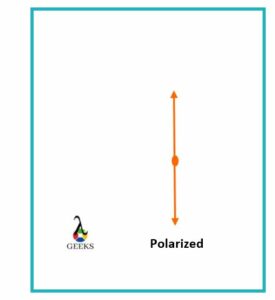
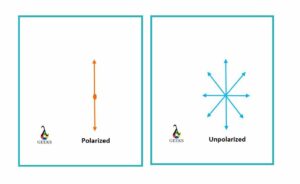
To study the polarization types, that is the article’s primary focus.
Polarization Types: Nature, concept and classification
The essential property of light that is its wave nature further consists of two more classifications, i.e., the waves have both transverse and longitudinal nature. Based on these types, the phenomenon of polarization is grouped into three types, that is mentioned below;
let us study the polarization types,
Linear polarization of light
The term linear stands for the meaning straight the linear polarization type refers to how electric and magnetic vectors move in a linear direction, causing polarization.
There will be a specific wave axis that acts as a point to know the nature of these vectors. In a linear polarized type of light, the electric component of the wave vector travels in a straight direction to the axis of the wave. In contrast, the magnetic component usually travels to the axis and electric component.
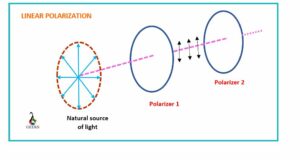
In general, for linear polarization, the direction of the electric component is considered, and even the polarization can occur in some other direction that is normal to the axis of the wave.
The linear polarization type can be again classified into two other aspects,
Horizontally linear polarized
The first linear polarization type is horizontal polarization, the direction of polarization will be straight, and the polarized waves move in a direction that is parallel to the surface; it generally oscillates on a horizontal plane.
Vertically linear polarized
The second linear polarization type is vertical polarization; in this type, the vertically polarized waves move in a perpendicularly surface, and the electric vectors oscillate in a vertical plane. Vertically polarized waves travel perpendicular to the surface of the earth.
Let us move on to our next polarization type, i.e., circular polarization.
Circular polarization of light
In circular polarization, the electric and magnetic fields will constantly value at all the point movement points direction varies with rotation in the plane that is normal to wave axis, and even it has constant magnitude while rotating on a plane.

The two types of circularly polarized type are below,
Right-hand circular polarization type
It is a type of circularly polarized light. The direction of rotation of polarized waves / electromagnetic vector will be the right side, or we can tell it has a clockwise direction concerning wave axis propagation direction.
Left-hand circular polarization type
It is a type of circularly polarized light. The direction of rotation of polarized waves / electromagnetic vector will be on the left side, or we can tell it has an anti-clockwise direction concerning wave axis propagation direction.
Elliptical polarization of light
The third main polarization types are elliptical polarization. Here, the electric at certain point travel such that it depicts the form of an ellipse in a plane perpendicular to the propagation direction. It is a general form of polarization from which the linear and circular polarized are elucidated.
It was all about polarization types and their concepts.
How to measure the polarization of light?
The polarization of light, in general, can be measured using a relevant formula, one of the types of measuring polarization is by using Brewster’s angle that is given below,
The angle of polarization that does have the meaning of angle of electromagnetic direction from Brewster’s law is measured by
tanθ = (n2 / n1)i
- n1 will be the initial medium
- n2 will be the second medium
- I refer to the value Io cos2θ
To know other methods of measuring polarization types.
Methods to measure the polarization of light
The essential methods of polarization types are widely used globally, right from the field of physics and chemistry to the industries. The four essential methods of polarization types of polarization of light are given as follows,
- Polarization from Scattering
- Polarization from Reflection
- Polarization from Refraction
- Polarization from Transmission
Polarization from Scattering
In a polarization by scattering method, the electric and magnetic waves radiate and scatter whenever a beam light beams through any material. At this point, lights absorb and re-emits continuously, leading to the partial polarization of light. It is used for the application of glare in glasses.

Polarization from Reflection
In a polarization by reflection method, when a light that is not polarized strikes at a point of angle on a non-metal, it reflects some polarised light. The factors that affect the magnitude of polarization by reflection are incident angle and the surface.
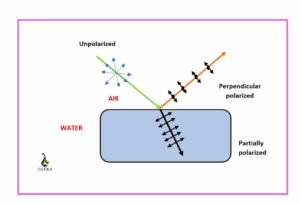
Polarization from Refraction
In a polarization by refraction method, the phenomenon of refraction occurs when the light ray travels between two media; while changing its medium of travel, its direction changes and the beam of ray gains some polarization, i.e., seen perpendicular to the surface.
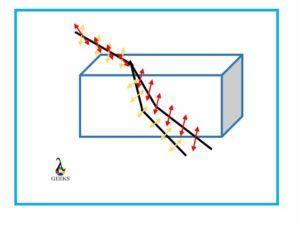
Polarization from Transmission
In this method of polarization by refraction, a special filter of light known as polaroid filters is used. These polaroid filters have a unique ability to block either one plane of electric or magnetic waves.
It’s time to focus on the various importance and applications of polarization of light.
Why is the polarization of light important?
The essential applications of polarization of light that are used in the manufacture of various appliances are listed below,
It is mainly used to construct polarized glasses and glare reduction lenses.
With the help of polarization by scattering, various colours are seen in the atmosphere.
The polarization method is used in the photography industry or movie making to capture the best photographs.
to study stones and minerals in many geological institutions.
Polarization is effectively used in sensing the source of radiation and scattering.
Polarization is used to penlight the phenomenon of the early and modern world.
In the production of sunglasses, that minimizes the effect of refraction by polarization is used in various activities such as sports, swimming, race etc.
Polarization is used in medical instruments.

It was all about the concept of polarization types and applications.
To know about related articles,
What is plane mirror reflection
Frequently Asked Questions on Polarization | FAQs
Give examples for each polarization type?
The most important examples of the main three polarization types are listed below,
- Linear polarization: mainly used in Camera filters.
- Circular polarization: Instrument used to detect aircraft in heavy storms.
- Elliptical polarization: The polarized elliptical waves are used to measure the chirality.
What are the other polarization types?
The other polarization types that also plays a vital aspect in the field of physics and even in chemistry is as follows,
- Dielectric polarization of light waves
- Ionic polarization of atoms
- Orientational polarization in atoms
- Electronic polarization and
- Space charge polarization
Also Read:
- What is plane mirror reflection
- Properties of reflection
- Why is vitamin d often called the sunshine vitamin
- Why is the sky blue
- Law of detachment examples
- Conduction vs convection 2
- Good conductors examples
- Where do phenomena like halos and sun dogs come from in meteorology
- Effective focal length calculations
- Is conductivity a physical property

I am Raghavi Acharya, I have completed my post-graduation in physics with a specialization in the field of condensed matter physics. I have always considered Physics to be a captivating area of study and I enjoy exploring the various fields of this subject. In my free time, I engage myself in digital art. My articles are aimed towards delivering the concepts of physics in a very simplified manner to the readers.